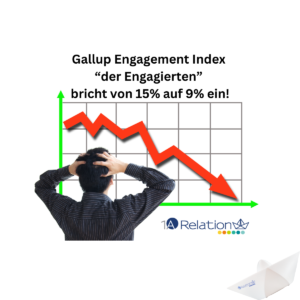In today’s marketing world, a personal and individual approach is a must. Nevertheless Gartner questions this on the basis of a study.
The discussion about personalization with three different opinions:
Gartner writes in his article that by 2025 companies will abandon personalization due to the lack of ROI and a rising flood of data regulation.
The reasons Gartner cites in its study are the decline in customer confidence, increased controls by government agencies, and barriers put in place by technology companies.
Scott Brinker reacted to this article as follows:
Personalization is not dead, but consumers need more control
In response to Gartner’s predictions, Scott Brinker explained that personalization is far from dead, and therefore one should not throw out the baby (here: personalization) with the bath water. Scott further argues that personalization and customization can still add value to the customer experience.
Scott acknowledges that for many marketers, this requires change and in some cases greater respect for consumer privacy. However, he rejected the argument that personalization is both costly and incompatible with privacy.
According to Brinker, government controls are the right way to lay good foundations for personalization.
Scott goes on to argue that the platform model (CDP or IPaaS) combines data silos and Martech, while a management system controls the whole thing.
Georg Blum on the topic:
Unfortunately we don’t know who was interviewed by Gartner and how. Experts of market research methods know that you can also ask questions in a way that leads to the desired result. So we enjoy the sucking out with critical reason.
One thing I am sure of. For 30 years we have seen what positive levers personalisation and individualisation have. Experiences of mine as well as results of colleagues and studies speak a clear language. Between 10% and up to 30% more response or interaction triggers personalization and individualization.
Why is that? Digression. Our brain reacts very sensitively to our name or personal address. We are happy about this. We become more attentive and open (also for advertising messages). The person opposite seems to know or appreciate us. So we trust him more and more.
Certainly personalization must be practiced. It is not possible to be clumsy. Campaign tests or A/B tests in marketing automation help the user to find out which variable is more attractive. Is it the age, the sex, the last purchase date or the product categories. Just to name a few very obvious variables. Also the anniversary of the 1st order, name day, birthday are information that exist for almost every prospective customer or customer. If you use this simple information to start, you will quickly realize: It’s worth it.
In the next phase, I’ll call you Amazon personalization (customers who bought X also bought Y), the topic of individualization is taken to the next level. Examples that offers are region- or weather-dependent also showed success. With appropriate content such as matching images, products or incentives, this is no witchcraft. Be brave, it will certainly work.
Anyone who does not test or tests incorrectly will give up in frustration. But we want to encourage our readers not to let such pessimists as Gartner or possibly frustrated users talk the subject down.
There is far too much potential for this. And it won’t work with the AI club either. So start with simple ideas and test, test, test.
Picture source: Pixabay.com
Note: This is a machine translation. It is neither 100% complete nor 100% correct. We can therefore not guarantee the result.












